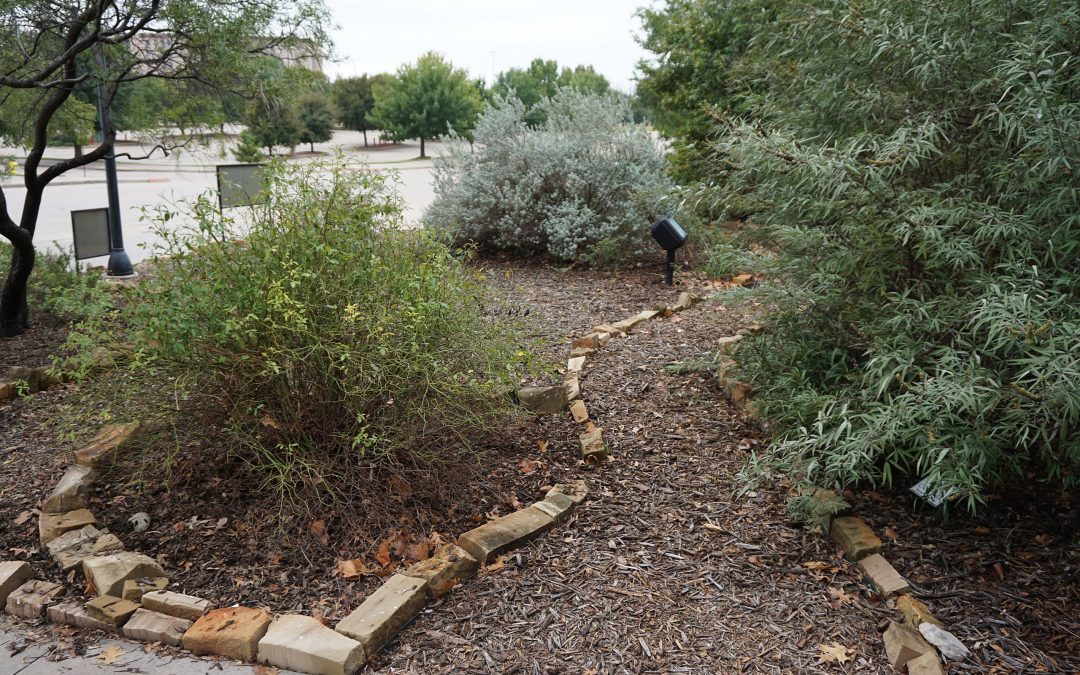
The Xeriscaping Demonstration Garden in Denver, Photo by Jeffrey Beall
What Is Xeriscaping?
Xeriscaping is a landscaping practice that aims to minimize the need for irrigation. With good xeriscaping practices, it’s possible to reduce your irrigation needs to nothing, letting the landscape survive purely on what water the natural environment provides. You most often see this type of landscaping in very dry climates, where water shortages can make irrigation expensive. Arizona, Texas, and Nevada, for example, use these practices constantly to minimize water consumption. While the practice is most common in drier climates, it can be done anywhere. So, is Xeriscaping right for you?
The Benefits of Xeriscaping
To determine if this is the right kind of landscape for you, you need to decide what you want from your landscape. This style of landscaping does come with a few challenges. Primarily, xeriscaping does away with the classical clean-cut lawn. Grass has incredibly high water demands, so to minimize water use, it’s dropped from design. A lot of people feel attached to the idea of a nice, green lawn. That’s not to say it never makes use of grass, but it severely reduces the amount of grass you plant and relies more heavily on grasses native to the region. If that doesn’t seem like a problem to you, there are many benefits. What are they?
1. Water Conservation
The biggest advantage to xeriscaping is the reduced water conservation. Studies show that these practices can reduce water consumption by as much as 60%. In places where water restrictions get tight, this can save a huge amount of money. Studies on large-scale use of this landscaping style show that cities can save up to $2 million annually just through the reduced water usage. Imagine how much money you could be saving on your water bill by implementing it.
This benefit isn’t just to you, though. Reducing your own water consumption will mean there’s more water to go around for everyone else. Reduced demand for water could potentially result in decreased costs of water in general, while allowing more for public parks and vacation areas. It could substantially reduce the impact of droughts on Cache Valley in the long run.
2. Lower Maintenance
One of the basic elements of xeriscaping is using plants native to the area. This not only reduces water use, but it also reduces maintenance needs. Most of the work in landscaping maintenance is about helping non-native plants adapt to the climates they’re in. Grass has to be cut to proper length to balance exposure to sunlight against overheating. You have to spend time watering plants that need more water than the natural climate provides. Native plants won’t require as much fertilizer because they’re used to the nutrients found in the native soil, so you spend much less time fertilizing your landscape. Doing away with a large grass lawn also means you don’t have to mow it. That saves hours of your time every week!
It’s not completely maintenance free, however; there are some requirements. To help maximize water retention, this landscape style makes use of mulch to hold water in the lawn. There will be some mulching required to keep the landscape efficiently watered. You’ll also need to do some weeding, though substantially less as the lack of grass means that weeds that parasitize grass won’t grow. If you do incorporate small patches of natural grass, that will require some cutting, as well, but substantially less than a full lawn.
3. Allergy Relief

Xeriscaping in Texas, photo by Michael Barera
If you have seasonal allergies, xeriscaping can provide incredible relief. Grass is allergenic and becomes more so the longer it grows. Additionally, many weeds that rely on grass and sod are serious allergens as well. Doing away with a grass lawn gets rid of those allergens, reducing seasonal discomfort.
4. Reduced Pollution
One of the biggest problems with lawn maintenance is the pollution they can produce. We’re not talking about carbon emissions that most people think of as pollution, but urban runoff pollution. Modern lawns require a lot of fertilizing and pesticides to keep them in good condition. When you water your lawn, these chemicals flow away with the water and end up in rivers, lakes, and other natural bodies of water. Xeriscaping reduces water use, so this is less likely to happen. Additionally, it reduces the need for fertilizers and pesticides, so even when you do have run-off, it’s less polluted.
Is Xeriscaping Right For You?
Xeriscaping is always a landscaping option, no matter where you are. Whether or not it’s right for you depends on what you want your landscape to be and how much work you’re willing to put in. This style is really good for low maintenance and low water usage. With droughts and water shortages being a consistent problem for Cache Valley, this is a great option to lower your water bill. The reduced maintenance also saves you time and money on the amount of work you’d normally need to do keeping your landscape in good condition.
If these benefits sound right for you, then xeriscaping might be a good choice. However, keep in mind that some HOAs require a certain amount of any yard or landscape to have grass, so you’ll have to check with them first if you’re a part of such a group. If there’s no argument there, then it’s worth considering if you want to save money and time on watering and yard maintenance.
If you want to know more, feel free to get in touch with us! We’ll be happy to answer any questions you have.

